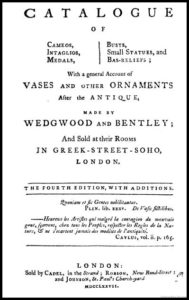 Wedgwood and Bentley Catalog of 1777 (easily found through a web search and downloaded from https://books.google.com/books?id=5QFcAAAAQAAJ&printsec=frontcover&source=gbs_ge_summary_r&cad=0#v=onepage&q&f=false — these links don’t usually last very long; just do a quick search for the title and it pops up.)
Wedgwood and Bentley Catalog of 1777 (easily found through a web search and downloaded from https://books.google.com/books?id=5QFcAAAAQAAJ&printsec=frontcover&source=gbs_ge_summary_r&cad=0#v=onepage&q&f=false — these links don’t usually last very long; just do a quick search for the title and it pops up.)
I wanted to know a little more about the subject and perhaps the original intaglio that they replicated so I started my search. First I went to the Raspe Catalog of Tassie’s collection as described in my recent post entitled “An Intaglio is more than a stone“. That gave me the info I was looking for on all but two of them. The two that remained were “ENCHANTMENT” and “ROMAN MATRON”
I couldn’t find any pictorial image or reference to either of these. The titles of the works were those given to the pieces in the Wedgwood and Bentley catalog. The one of the seated woman, entitled “Roman Matron” seemed especially odd in that most intaglios usually depict a specific individual or at least historical or mythical figure. I did the usual word search on the internet, but didn’t turn up anything about these two pieces. So I let it drop – for a while.
A couple of nights ago I was surfing the web looking for images of intaglio cabinets (dactyliotheca) and I came u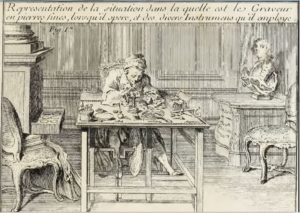 pon an old print of a gem engraver. I wanted a copy without any copyright attached so I went to the origin “TRAITÉ DES PIERRES GRAVÉES” ( “THE TREATISE ON ENGRAVED STONES”) Vol I by Mariette, published in 1750. While perusing the book I started going through the plates of engravings of various intaglios in Vol II that I found at https://archive.org/details/traitedespierres02mari To my pleasure, I found images of the two basalts for which I was seeking additional information. I used my old friend “translate.google.com” to loosely translate the French to English. Here is what I found.
pon an old print of a gem engraver. I wanted a copy without any copyright attached so I went to the origin “TRAITÉ DES PIERRES GRAVÉES” ( “THE TREATISE ON ENGRAVED STONES”) Vol I by Mariette, published in 1750. While perusing the book I started going through the plates of engravings of various intaglios in Vol II that I found at https://archive.org/details/traitedespierres02mari To my pleasure, I found images of the two basalts for which I was seeking additional information. I used my old friend “translate.google.com” to loosely translate the French to English. Here is what I found.
ENCHANTMENT
“The serpent, which, from among the flames above the altar, might make one think that it is a sacrifice of Aesculapius. If there were no other figures than those of the priest and the musician who plays the lyre, this interpretation would be without question; but the Satyr who dances, a crown in his hand, and the Bacchante in disorder, who stirs a drum furnished with bells, have nothing in common with the God of Medicine, and want another explanation to be sought. That which seems most natural, is to regard this ceremony as an Evocation or Enchantment made by these Charlatans, who, by virtue of their prestige, had the secret of amusing the people. They carried with them familiar serpents, to their flight of instrument players, & men & women who imitated the character and gestures of those who celebrated the Feasts of Bacchus. Above the head of the Satyr is seen a vase placed upon a specimen of a capital; The rest of the column is assumed to be hidden by the figure which is before; There must be no other mystery.”
ROMAN MATRON
CALPURNIA CONCERNED ABOUT CESAR.
Amethyst.
“This Antique, one of the most important in the King’s Cabinet, having only given rise to conjectures until now, I can, with less temerity, propose my own. I shall attach myself chiefly to this Genie [MyI: The English word derives from the Latin genius and is also used for this kind of guardian spirit from ancient Roman religion] placed upon a column; Far from believing that it has been put to the test, I think it is an essential part of the subject. It strikes as much and more than all the rest; It is upon him that the Roman Lady fixes all her glances, she seems to interrogate him, and seems to answer him. The whole art of the engraver seems to be employed in expressing this dialogue. This engraved stone can therefore represent Calpurnie, when Caesar went to the Senate, consulted his Genie on the anxieties and the presentiments which agitated him. It holds a fan, and behind it is a sort of cap in the form of a helmet, suspended from the wall, whose meaning do not ask, I do not know; I shall content myself with observing that one of the ancient statues of the King, engraved by Mellan, represents a Roman Lady in the same attitude in a dress quite similar to this one. They say it’s Agrippina coming out of the bath.”
I still don’t know who the original engravers were or anything about the owners over time, but this is a start. What fun!!!!
As an aside, I have sometimes wondered about the scene on an intaglio of an individual looking at a miniature sculpture set upon a pedestal, which is seen on a number of stones. Did it have some sort contextual significance? The description about Calpurnia and Caesar perhaps gives a clue. Could the scene be a depiction of the thoughts of the main subject of the scene? What do you think?
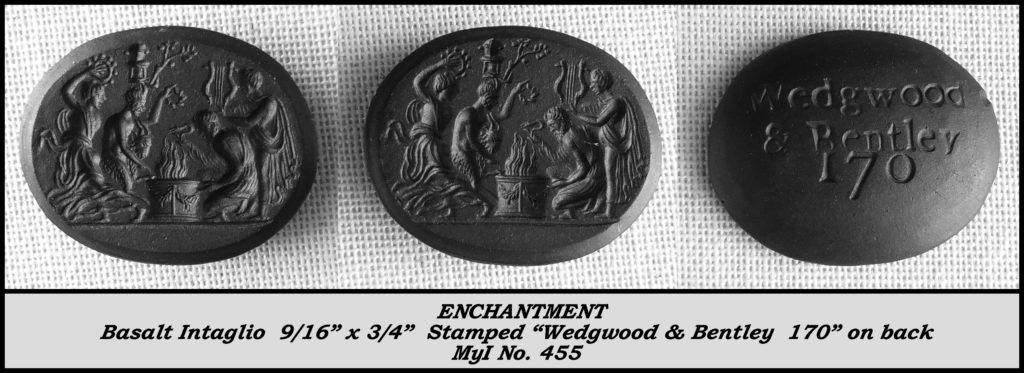
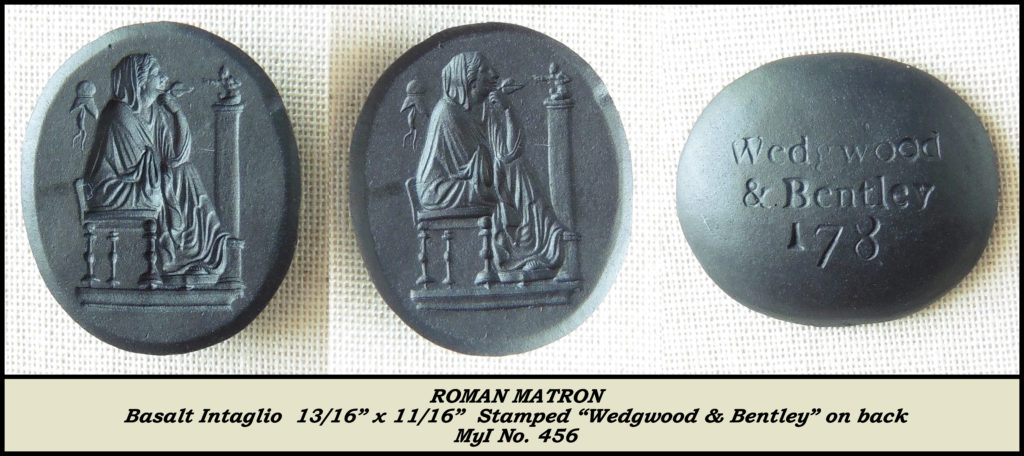
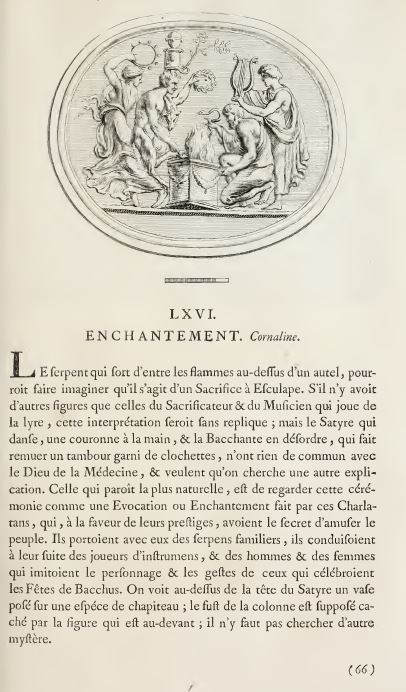
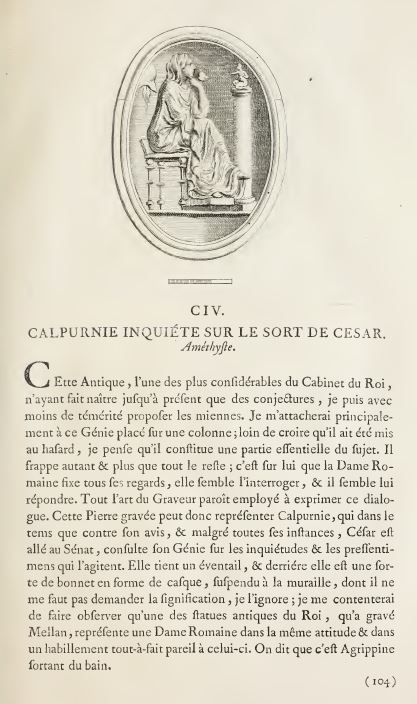
Leave a Reply